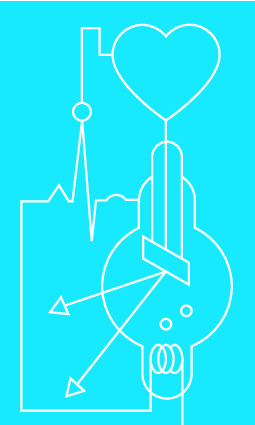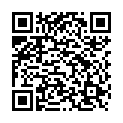|
|
|
| Module code: BMT1612 |
|
1V+1P (2 hours per week) |
|
2 |
| Semester: according to optional course list |
| Mandatory course: no |
Language of instruction:
German |
Assessment:
Oral examination
[updated 05.06.2025]
|
BMT611 Biomedical Engineering, Bachelor, ASPO 01.10.2011
, semester 6, optional course
BMT1612 Biomedical Engineering, Bachelor, ASPO 01.10.2013
, optional course, medical/technical
BMT2614.RAD (P213-0040) Biomedical Engineering, Bachelor, ASPO 01.10.2018
, semester 6, optional course
BMT2614.RAD (P213-0040) Biomedical Engineering, Bachelor, SO 01.10.2025
, semester 6, optional course
|
30 class hours (= 22.5 clock hours) over a 15-week period.
The total student study time is 60 hours (equivalent to 2 ECTS credits).
There are therefore 37.5 hours available for class preparation and follow-up work and exam preparation.
|
Recommended prerequisites (modules):
None.
|
Recommended as prerequisite for:
|
Module coordinator:
Prof. Dr. Dr. Dirk Pickuth |
Lecturer: Prof. Dr. Dr. Dirk Pickuth
[updated 19.01.2016]
|
Learning outcomes:
After successfully completing this module, students will have detailed knowledge of imaging techniques, from their technology to their application. They will have an excellent command of the physical basics, the technical concepts and the medical application of imaging procedures. They will be familiar with the indications and contraindications for the application of these procedures and can assess their advantages and disadvantages. All projection and sectional imaging techniques will be considered, with a focus on radiography, mammography, and angiography, as well as magnetic resonance imaging, computed tomography, and sonography. Students will have an understanding of the possibilities of medical information processing and communication.
[updated 05.06.2025]
|
Module content:
- Radiography
SI units in radiology Types of radiation Interaction of radiation with matter Attenuation law Attenuation factors Phases of radiation effects X-ray workstation Structure of the X-ray tube Electrical circuits of the X-ray tube Characteristics of the X-ray tube Origin of X-ray radiation Properties of X-ray radiation Hard beam technology Soft beam technology Automatic exposure Exposure measuring chambers Heel effect Intensifying screen and blurring X-ray film Optical density Geometric blurring Scattered radiation Scatter grid Perpendicular beam Central beam Superposition Edge effect Enlargement Isometry Parallax Distortion inverse square law digital radiography systems characteristics of digital radiography image processing in digital radiography flat panel detectors image plates digital luminescence radiography CCD systems tomography fluoroscopy workstation image intensifier tube quality assurance film processing sensitometer X-ray contrast media chest workstation chest overview image decentration, defocusing anatomy of the chest posterior-anterior chest image lateral chest image anatomy of the joint double contrast examination of the stomach small intestine passage according to Sellink colon contrast enema example findings phlebography
- Mammography
Anatomy of the breast - Mammography device - Mammography consultation hour - Recording technique - Radiation path - Adjustment criteria - Conventional mammography - Digital mammography - Conventional mammography compared to digital mammography - Importance of compression - Quality criteria - Minimization of blur - Normal findings - Involution - Criteria for findings - Malignancies in mammography - Galactography - Malignancies in galactography - Devices for stereotaxy - Principle of vacuum assisted biopsies
- Angiography
Angiography workstation Device elements Puncture site Puncture technique Catheter placement Contrast agent injection Patient examination Image post-processing Digital subtraction angiography Generation of a DSA image Digital subtraction angiography compared to conventional angiography Image evaluation Overview angiography Selective angiography Vessel closure Intervention in case of vessel closure
- Magnetic resonance imaging
Magnetic resonance imaging - Coils - Structure of a MRI scanner - Contraindications - Terminology and sequences - K-space - Measurement parameters - Image contrast - Signal intensities - Examination parameters - Artefacts - MR angiography - Stroke diagnostics - Tumor diagnostics - Metastasis diagnostics - Special sequences - Image fusion - Tumor progress monitoring - Tumor volumetry - MRT compared to PET
- Computer tomography
Computer tomography scanner - Mobile computer tomography scanner - Installation plan - Computer tomography accessories - Structure of a computer tomography scanner - Basic principles of CT - Principles of CT scanning - Principles of spiral CT - Spiral CT compared to incremental CT - Principles of multi-layer spiral CT - Detector configuration - Multi-layer CT in comparison to single layer spiral CT - Pitch factor - Influence of scan parameters on patient dose - Principles of CT image reconstruction - Pixels and voxels - Windowing - Hounsfield units - CT applications - Special CT applications - Artefacts - Test points for constancy testing - Whole body scintigraphy - Whole body CT - GK-CT compared to GK-MRT - Whole body CTA - GK-CTA compared to GK-MRA - Image display - CT of the heart and coronary vessels - Three-dimensional transparency - Catheter-like display - Multiplanar reformation - Volume rendering and MPR - CTA of the entire arterial flow path - CTA of renal vessels - CTA of pelvic vessels - CTA of leg vessels - CTA of foot vessels - CTA after intervention - Virtual colonoscopy - High resolution CT - Bronchial CT - Tumor imaging - Metastasis imaging - Trauma diagnostics - Three-dimensional imaging - Therapy planning - Functional diagnostics
- Sonography
Principal of sonography - Types of transducers - Transducer design - Sound field - Sound attenuation - Harmonic imaging - Standard sections - Convex scanner
[updated 05.06.2025]
|
Recommended or required reading:
Dössel, 0.: Bidgebende Verfahren in der Medizin
Kramme: Medizintechnik
Laubenberger, Th.; Laubenberger, J.: Technik der medizinischen Radiologie
Pickuth, D.: Klinische Radiologie Fakten
Rybach, J.: Physik für Bachelors
[updated 05.06.2025]
|


